
Electric Boating and Foiling Are Greening Our Blue Planet
Sailing has always been considered one of the greenest forms of transportation on this blue planet. At a recent Wednesday Yachting Luncheon at the St. Francis Yacht Club, we learned more from West Coast pioneers in the electrification of boating that is giving more elements of the boating world the opportunity to go green. We heard from a panel consisting of Sam Seder, operations manager at Navier in Alameda; Veronica Cargay, project manager at Candela in Sausalito/Sweden, and Mike Gunning, sales manager at Electric Yacht in Dana Point.
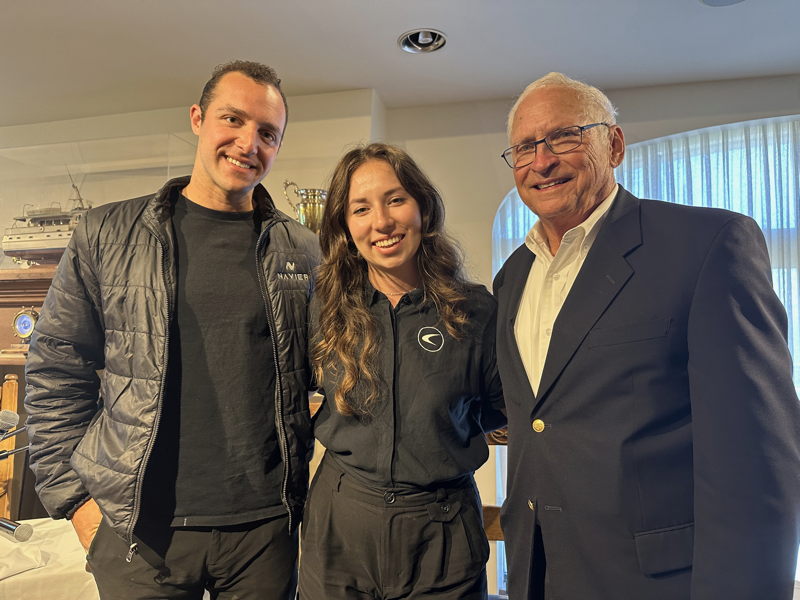
Foiling took off after the 2013 America’s Cup on San Francisco Bay and has subsequently lifted many sectors of the sailing market, from foiling kiteboards, wingers and Moths to the current America’s Cup and now electric foiling powerboats being developed by Navier in Alameda and Candela in Sweden, the latter with its US base in Sausalito. Additionally, Electric Yacht has been a pioneer in electric auxiliary motors for sailboats. It was founded by Scott McMillan in 2008, with Mike joining in 2010. It was a slow start but saw adoption increase more quickly in 2017 in what Scott called “the Tesla effect” as people became more comfortable with the concept. Given the number of Teslas and now electric auxiliaries in the Bay Area, that comfort has been growing rapidly.
It’s not surprising to see this kind of development in California, where Tesla took the lead in the mass production of electric cars, and we live just miles from one of the world’s first large-scale wind farms, built in the early ’80s at Altamont Pass (at one time, the largest wind farm in the world). Driving through Altamont Pass you see a larger version of the wind generators that are on the stern of many cruising boats, though they’re much smaller than the large-scale wind turbines cranking out clean power today.
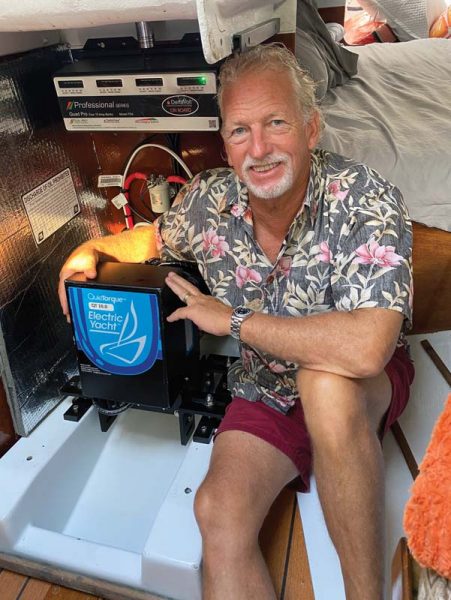
California is also where the mass production of small electric yachts was introduced by Duffy Boats in Southern California in 1968. However, Mike Gunning pointed out that the first boat powered by electricity was in 1839 in St. Petersburg, Russia, and from the 1880s to the 1920s electric launches were very popular in much of the developed world. Electric Yacht has now installed over 1200 electric auxiliaries on boats across the US, with plenty of them in the Bay Area where plentiful wind power allows most sailors to sail with minimal need for an auxiliary.
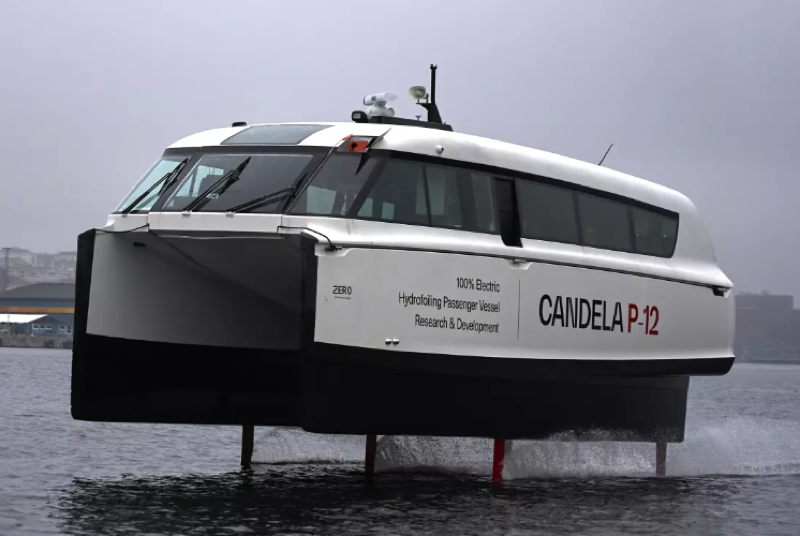
Now Candela and Navier have both developed quiet green foiling boats for recreational and commercial use. The large, heavy and often-empty diesel ferries crossing the Bay are seen as an opportunity for replacement by fast, efficient electric ferries that will take fewer passengers but have shorter transit times, a far smaller carbon footprint, and more flexible docking destinations due to size.
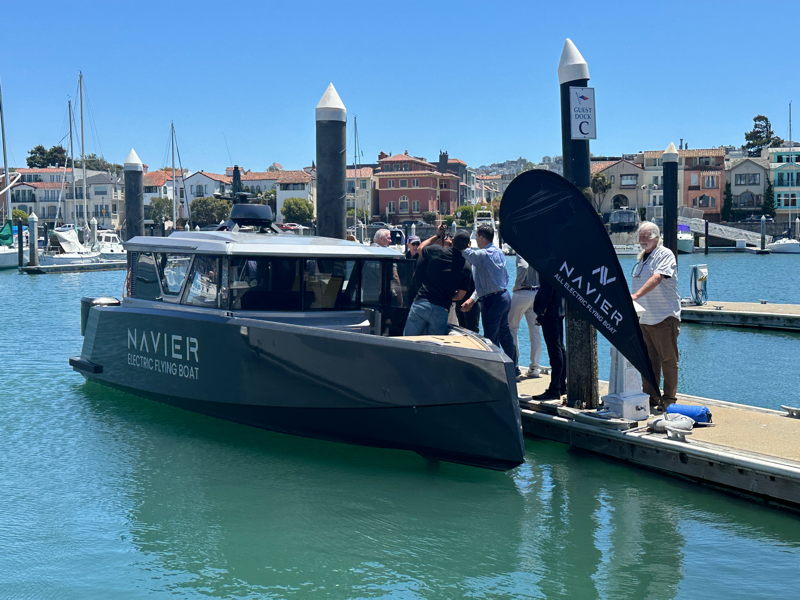
For sailors who appreciate the quiet that comes with sailing, the electric auxiliary has become a trusted friend. According to Mike Gunning, there are about 88,000 sailboats in the US with aging fossil-fueled auxiliary engines. He estimates the cost of an electric propulsion system is about 70% of the cost of a diesel repower; modern electric systems can cost-effectively extend the useful life of many of these older boats while lowering the maintenance and operating costs. Mike acknowledged that, depending on how you use your boat, the electric auxiliary may not be the way to go, but for many looking at a repower it’s an option worth considering. Lin and Larry Pardey cruised the world without any engine at all, and there are now cruisers rounding the world with electric auxiliary only. The Spaniers’ Antrim-designed, Berkeley Marine Center-built scow-bowed, junk-rigged catboat, Rosie G has now cruised from Berkeley to the South Pacific with an electric and solar setup.
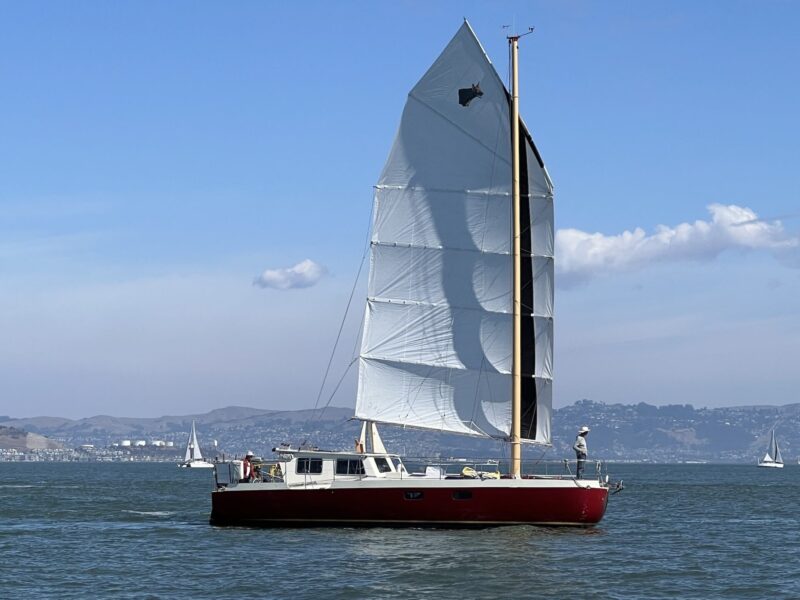
All the speakers spoke of the ongoing development of all these technologies. The growing volume of EVs on the road and batteries for homes and boats is increasing production of batteries, which is driving costs down. People have many concerns around electric boats, including “range anxiety,” though we’re often reminded that when Henry Ford first started building cars there were essentially no gas stations, and when most of us bought our first cell phones there were very few cell towers. Some people initially opted to stick with a horse, and later a landline, but the world moved forward.
Sailors have always appreciated the clean, quiet and green aspects of wind power. The electric auxiliary is seeing increasing acceptance, and the type of horizontal wing technology on Daniela Moroz’s fast, foiling kiteboards is now helping lift Candela and Navier into the clean, green world of electric foiling powerboats. All three companies continue the pioneering tradition of the California working waterfront. It will be interesting to follow the evolution of wings, foils and the green world of sailing on our blue planet.
Did you know? Latitude 38’s classifieds offer FREE online ads with photos for boats and gear priced under $1,000. Clean out the dock box or garage by posting them here. And someone just posted a nice-looking Olson 25 for $12,900.

Be on the lookout for “green washing”.
Iive on a man-made lake in Las Vegas that only allows electric powered boats. Last year after must research I purchased a Lear 204 from Lear Boats in Garden Grove Ca. It is the most innovative one of it’s kind that I could find and I could not be more pleased. The company owners are part of the Lear jet family and the boat reflects that in some ways.
I converted my Catalina 34 MkII to a 20kW Electric Yacht system 4 years ago. I too am very happy, it has worked perfectly, with zero maintenance, and the regenerative charging feature while sailing means that I often come back with a nearly fully charged set of batteries.
We will go with the time and tides, but so far we still have a lot of conventional outboard repair jobs